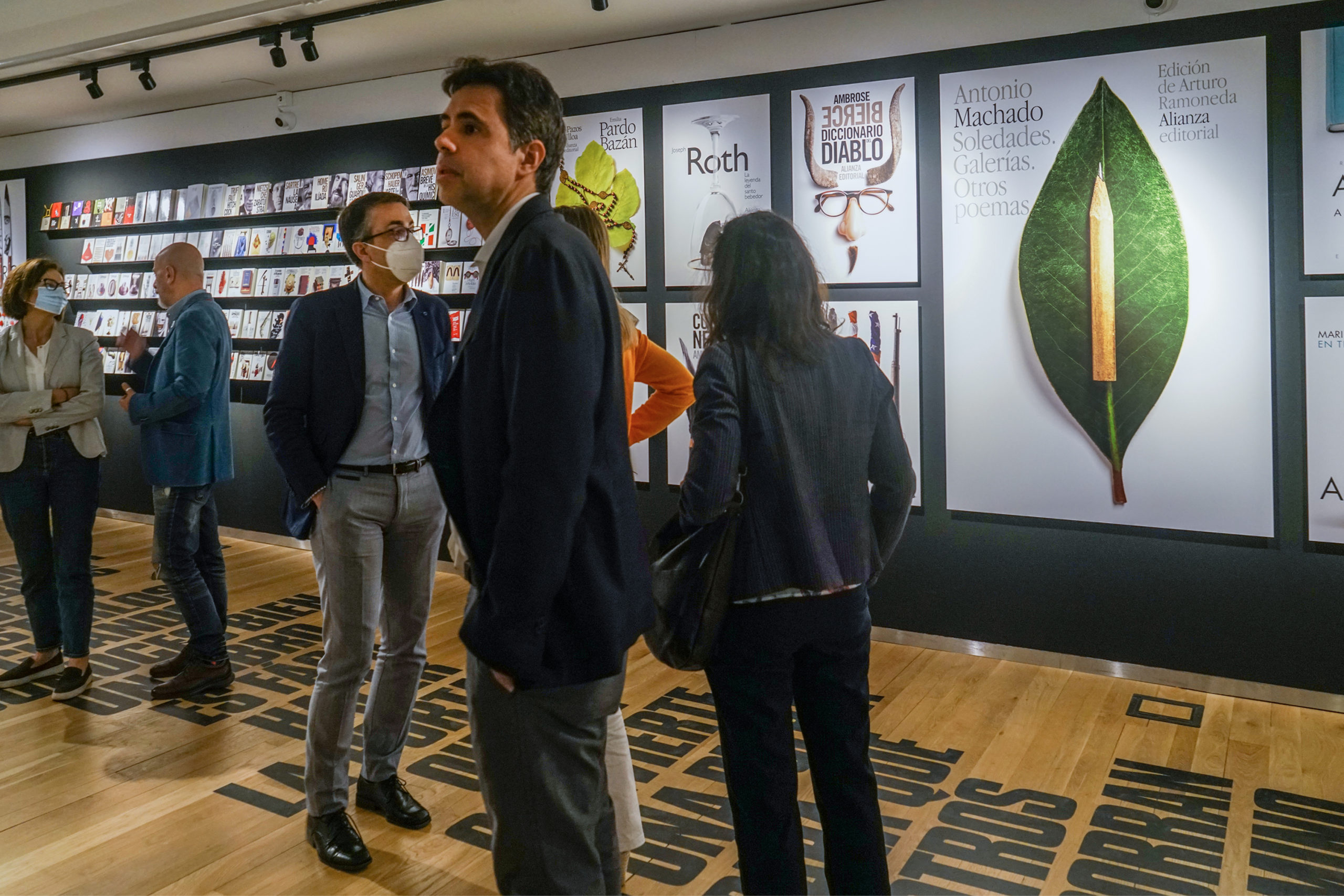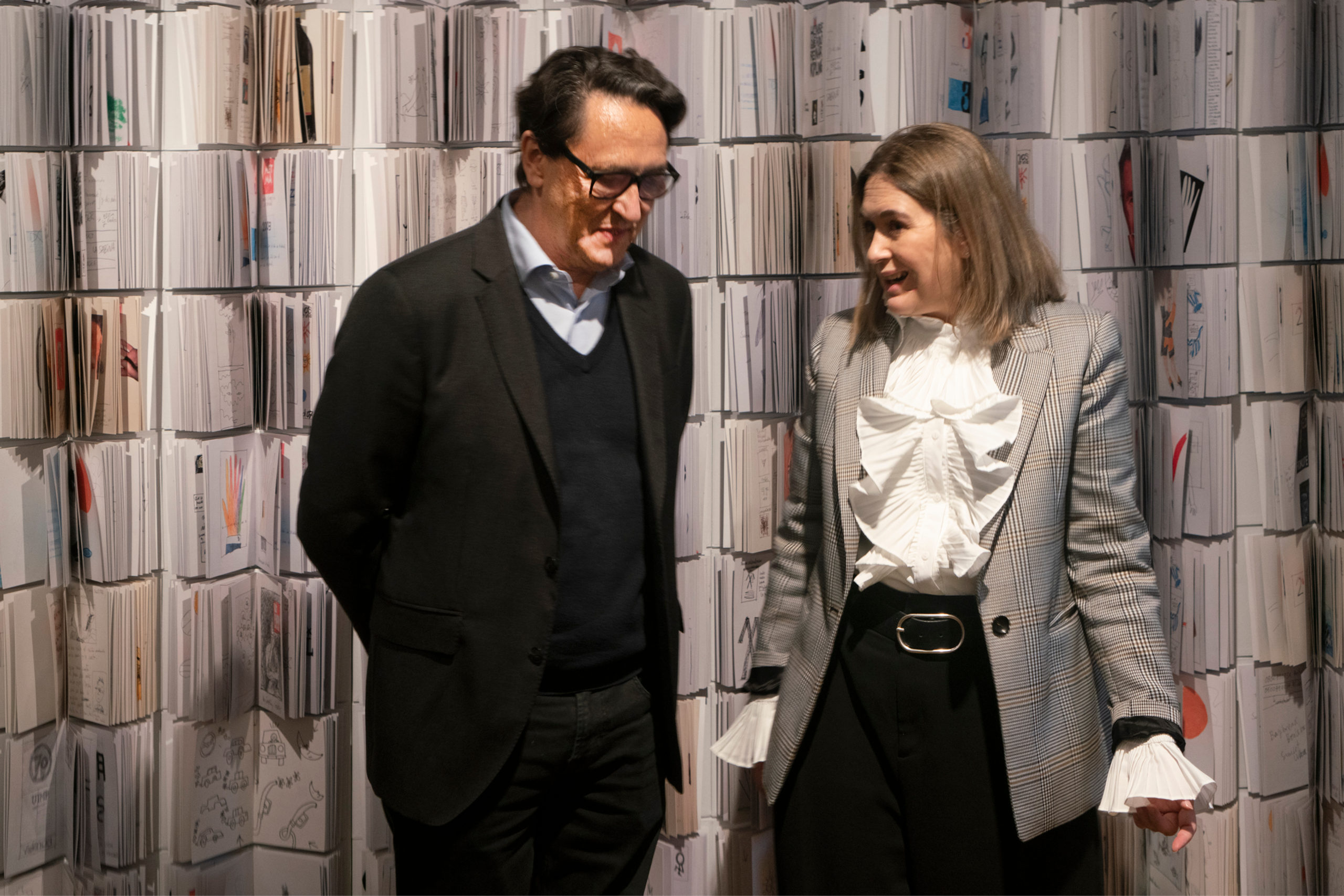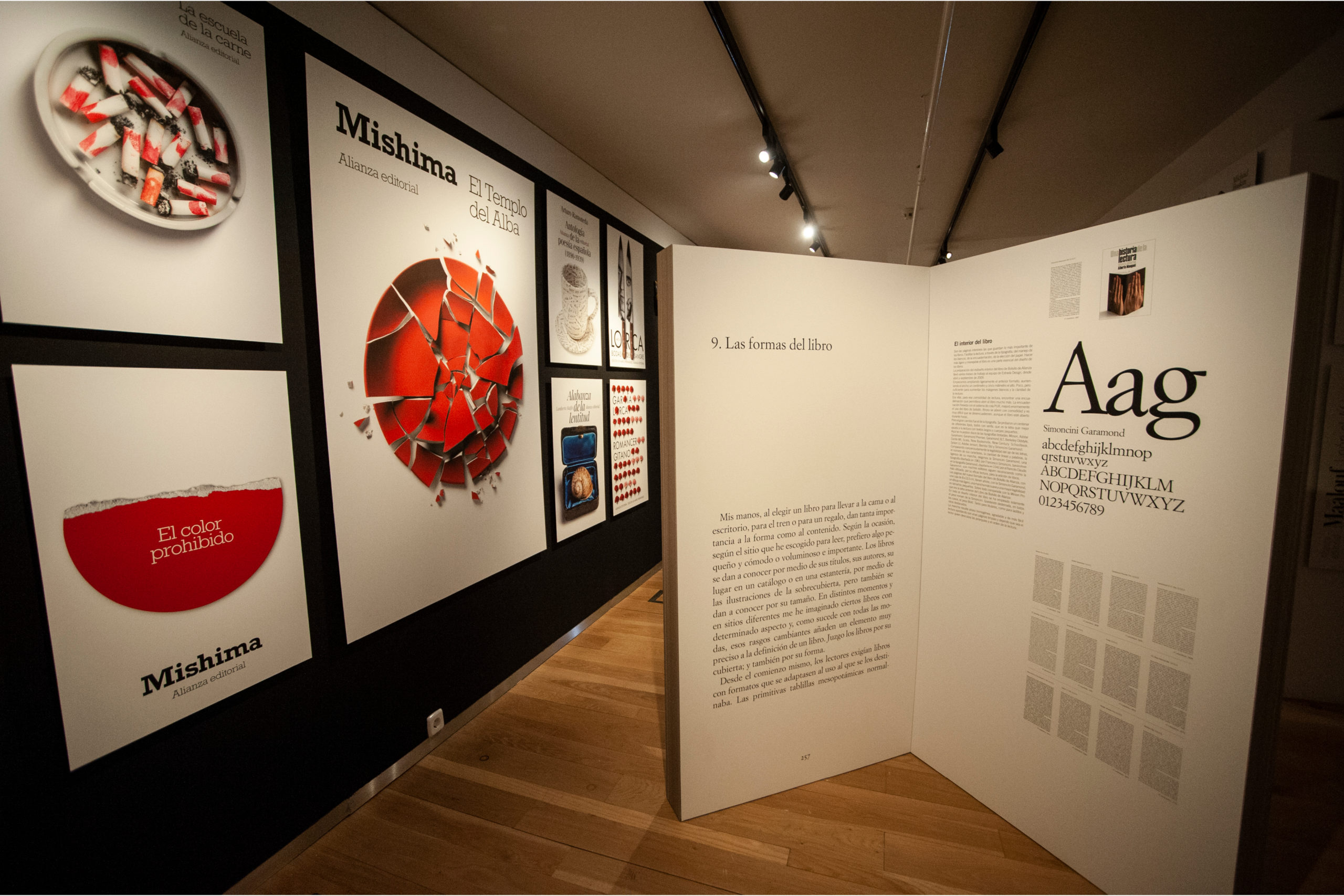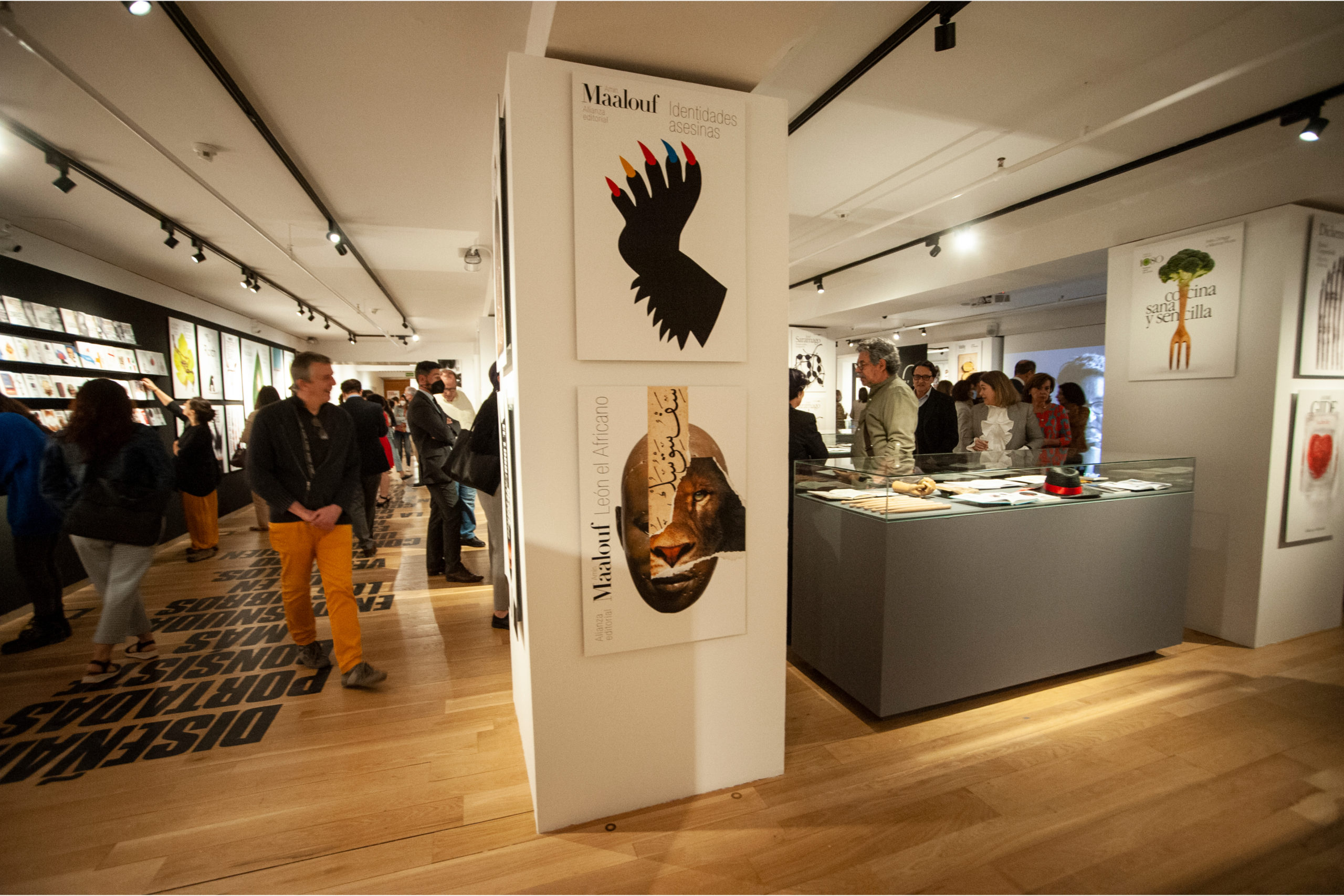Reading books,
designing covers
Exhibition Autonomous Community
of Madrid Regional Library







The image
Whereas the invention of the movable-type printing press in the 15th century produced the first great leap forward in literacy, the widespread use of photography and the mass media in the 20th century were the framework for the second. The coding of visual messages opens up enormous communication possibilities, further accelerated by the dizzying reality of new technologies. Many of the images on the book covers in this exhibition are generated from photography, as a language for capturing existing objects, avoiding as much as possible the use of photo editing programmes that introduce layers of distorting varnishes between reality and the eye of the viewer. Visual literacy has created enormous spaces for communication through the language of images, which have found in book covers a propitious territory.
Designing books
In the third decade of the 21st century, and once the digital book has shown that it is not a replacement for paper as an alternative reading medium, the traditional book continues to be the preferred option for the vast majority of readers.
Designing books today continues to be an important activity for design professionals and publishers continue to experiment with media, formats, fonts, papers and binding systems… This exhibition is, above all, a sample of book covers. But it is impossible to talk about book cover graphics without mentioning the object they shield, the medium on which they are printed and the importance of design for the contents that are previewed by book covers.
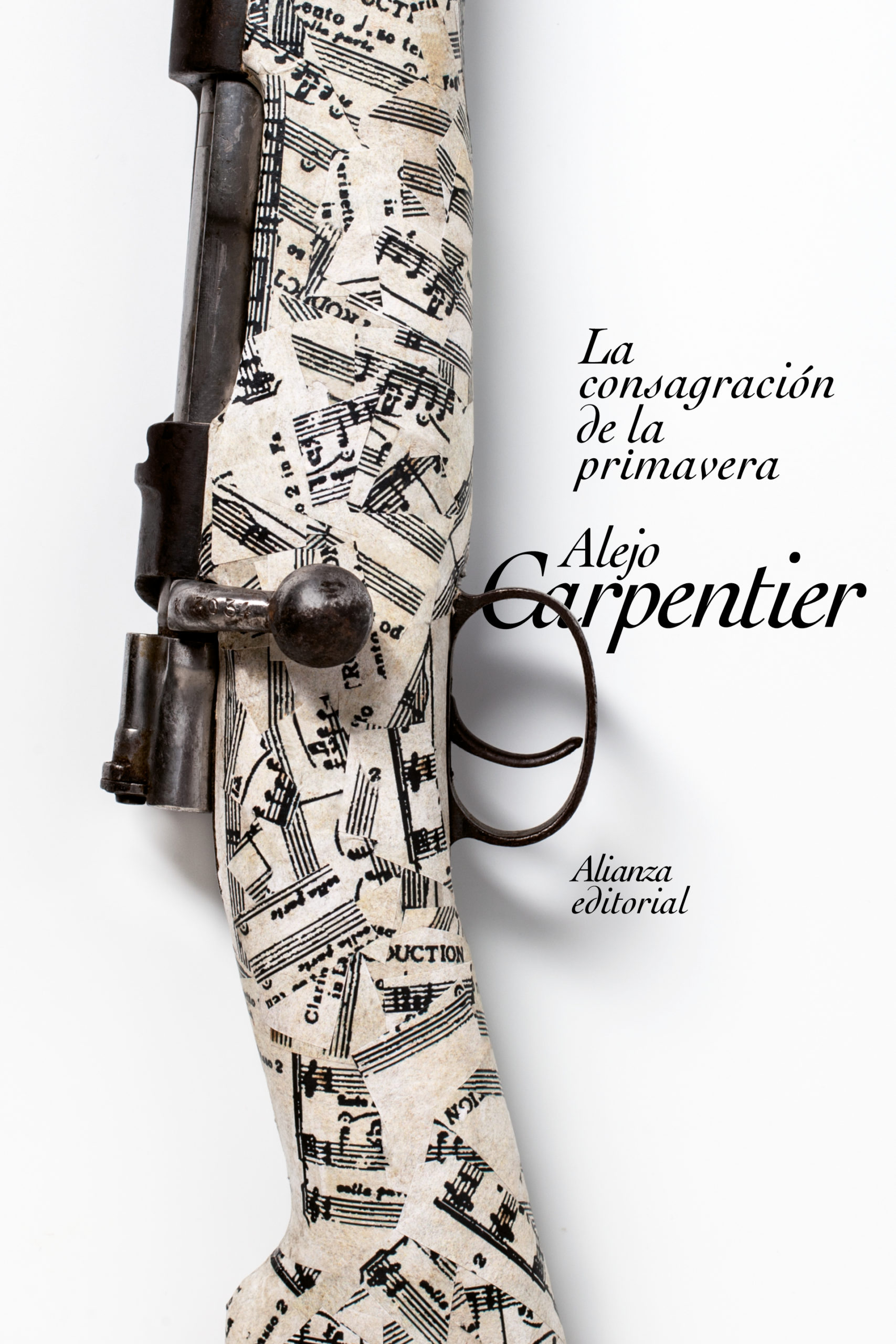



The process
Where ideas come from and how they are born are questions that are increasingly repeated in the design and art world. What are the secret ingredients that explain the birth of surprising or simply unexpected results. The design process has become a focal point for teachers and communicators, and also for a large portion of citizens who are tired of seeing results that are highly uniform and perhaps overly camouflaged. This book cover exhibition shows, through Manuel Estrada’s sketchbooks, the drawings, notes and initial sketches that produced the covers that we see on the books and in the enlargements on display.
The font
Fonts are an essential part of our lives and of our culture. From the Roman capital letter carved in stone to modern digital fonts, the evolution of letters is a reflection of the evolution of human civilisation. Knowledge of the secret life of letters, their laws of formation, their aesthetic power and their diverse interpretations constitute one of the essential keys to the craft of design. It is precisely this in-depth knowledge of fonts that allows us to explore their enormous iconic possibilities. Exploring the intersection between the textual reading of letters and their visual reading when drawing with them is the subject of some of the covers in this exhibition, particularly of the Greek and Roman classics series, which are designed from that convergence.
The process
Where ideas come from and how they are born are questions that are increasingly repeated in the design and art world. What are the secret ingredients that explain the birth of surprising or simply unexpected results. The design process has become a focal point for teachers and communicators, and also for a large portion of citizens who are tired of seeing results that are highly uniform and perhaps overly camouflaged. This book cover exhibition shows, through Manuel Estrada’s sketchbooks, the drawings, notes and initial sketches that produced the covers that we see on the books and in the enlargements on display.
The font
Fonts are an essential part of our lives and of our culture. From the Roman capital letter carved in stone to modern digital fonts, the evolution of letters is a reflection of the evolution of human civilisation. Knowledge of the secret life of letters, their laws of formation, their aesthetic power and their diverse interpretations constitute one of the essential keys to the craft of design. It is precisely this in-depth knowledge of fonts that allows us to explore their enormous iconic possibilities. Exploring the intersection between the textual reading of letters and their visual reading when drawing with them is the subject of some of the covers in this exhibition, particularly of the Greek and Roman classics series, which are designed from that convergence.




You might also like...

